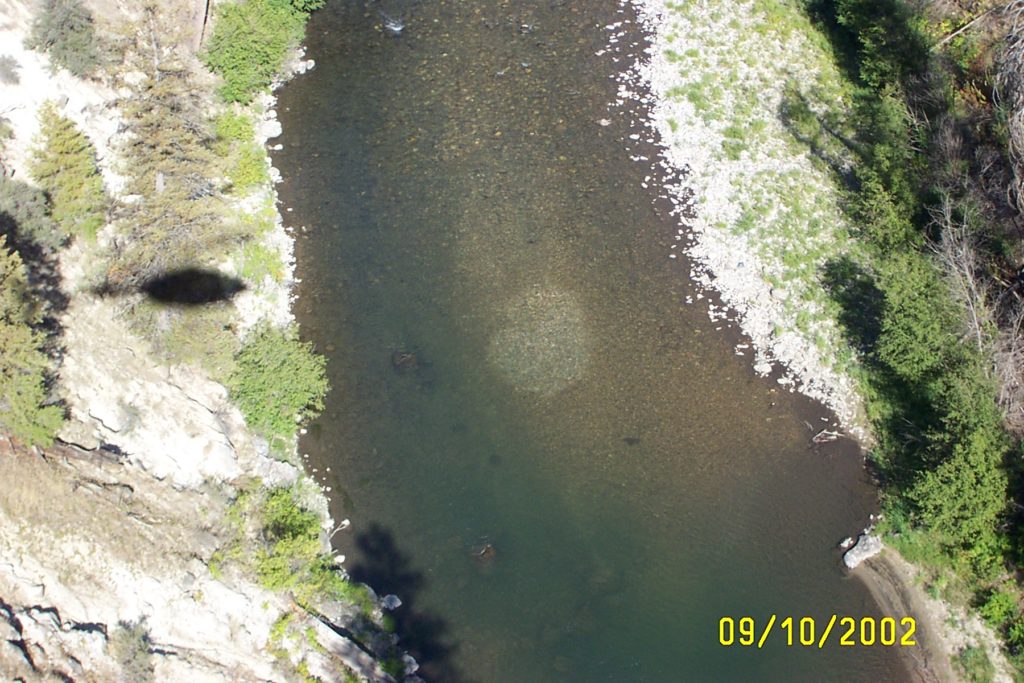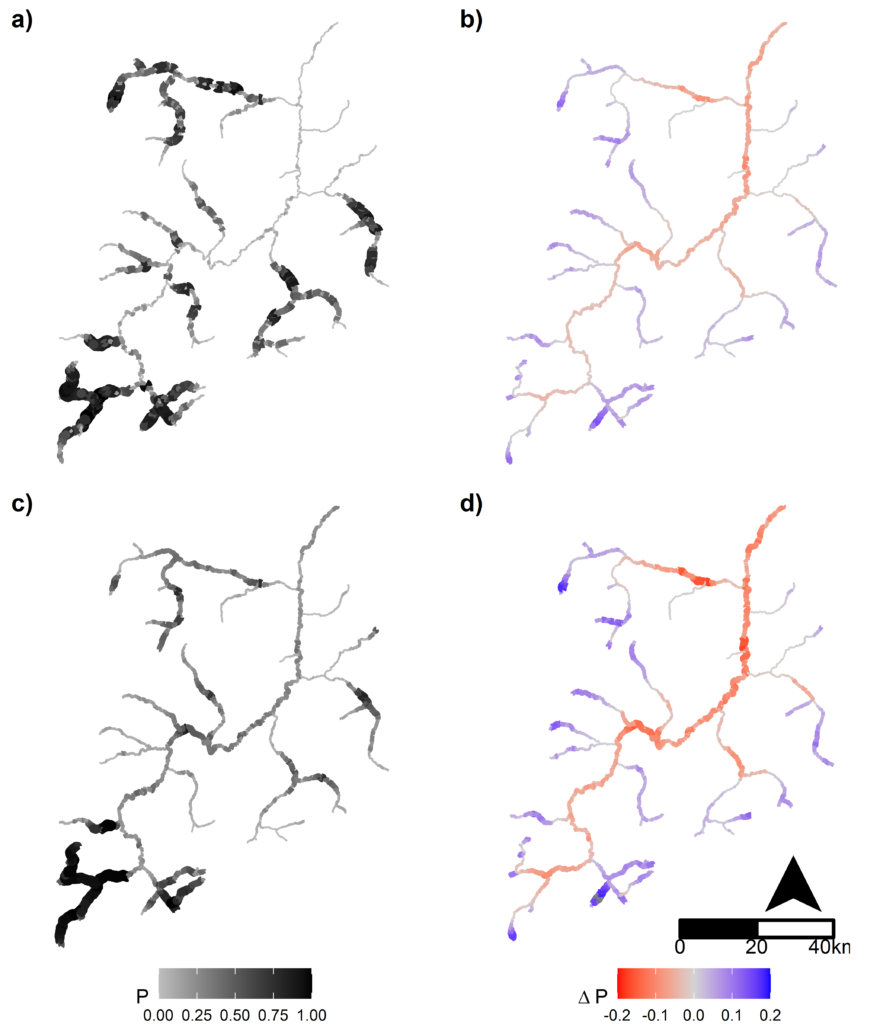
Pacific salmon spawning and rearing habitats result from dynamic interactions among geomorphic processes, natural disturbances, and hydro‐climatological factors acting across a range of spatial and temporal scales. We used a 21‐year record of redd locations in a wilderness river network in central Idaho, USA, to examine which covariates best predict the spawning occurrence of Chinook Salmon Oncorhynchus tshawytscha and how shifts under a changing climate might affect habitat availability. We quantified geomorphic characteristics (substrate size, channel slope, and valley confinement), climatic factors (stream temperature and summer discharge), wildfire, and conspecific abundance (as inferred by the number of redds) throughout the network. We then built and compared logistic regression models that estimated redd occurrence probability as a function of these covariates in 1‐km reaches throughout the network under current and projected climate change scenarios. Redd occurrence was strongly affected by nearly all of the covariates examined. The best models indicated that climate‐driven changes in redd occurrence probabilities will be relatively small but spatially heterogeneous, with warmer temperatures increasing occurrence probabilities in cold, high‐elevation reaches and decreasing probabilities in warm, low‐elevation reaches. Furthermore, positive effects of wildfire on redd occurrence may be more important than climate‐driven effects on stream temperature and summer discharge, although climate‐related changes in temperature and scour regime during the egg incubation period may influence survival to emergence. Our results identify where favorable spawning habitats are likely to exist under climate change, how future habitat distributions may differ from contemporary conditions, and where habitat conservation might be prioritized. Furthermore, the positive occurrence–abundance relationship we observed indicates that the study site is underseeded, and effective management actions are needed for increasing the recruitment of spawning adults to take advantage of available habitat.

Jacobs GR, Thurow RF, Buffington JM, Isaak D, Wenger SJ. Climate, Fire Regime, Geomorphology, and Conspecifics Influence the Spatial Distribution of Chinook Salmon Redds. Transactions of the American Fisheries Society. 2020.
https://afspubs.onlinelibrary.wiley.com/doi/10.1002/tafs.10270